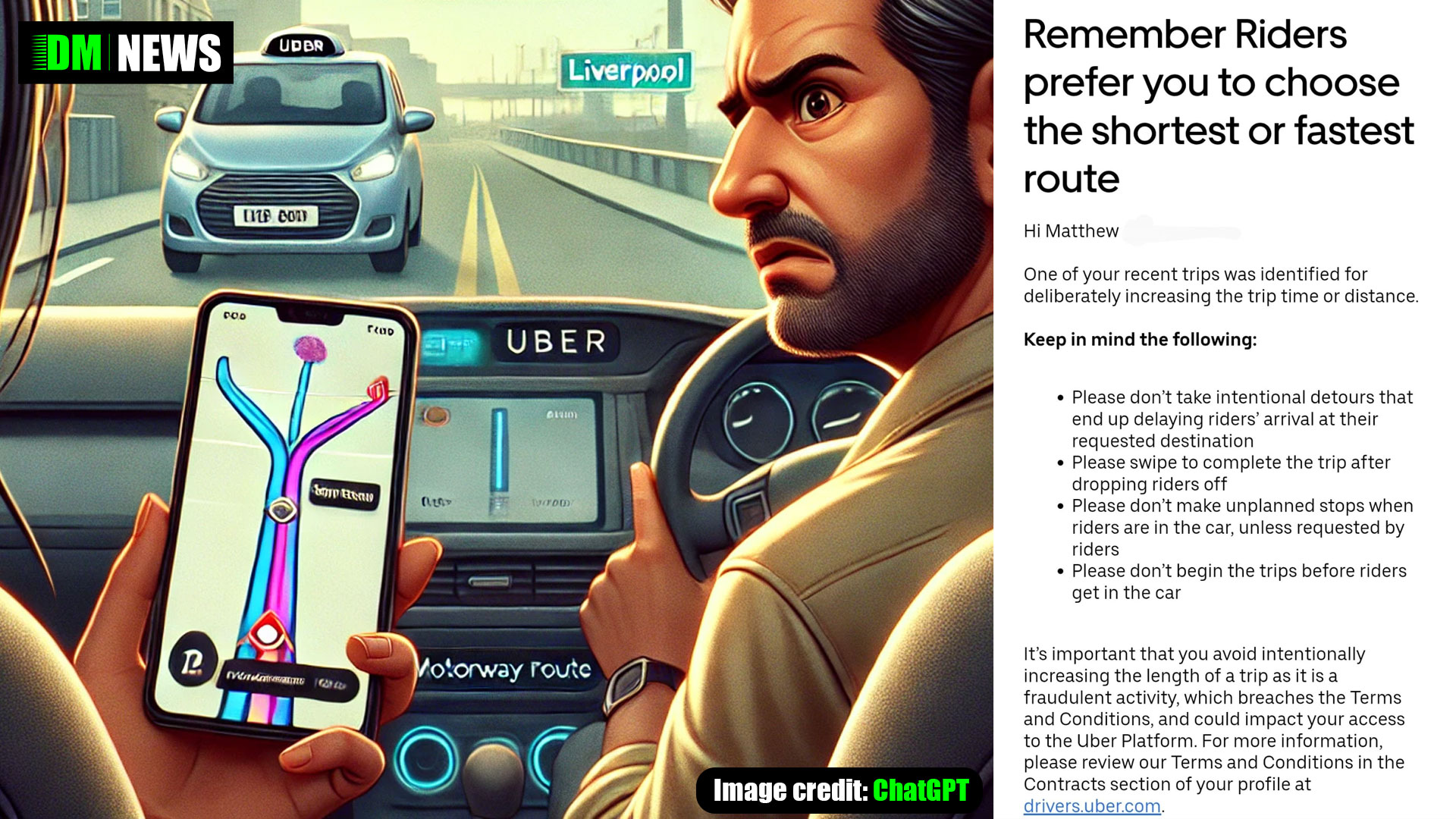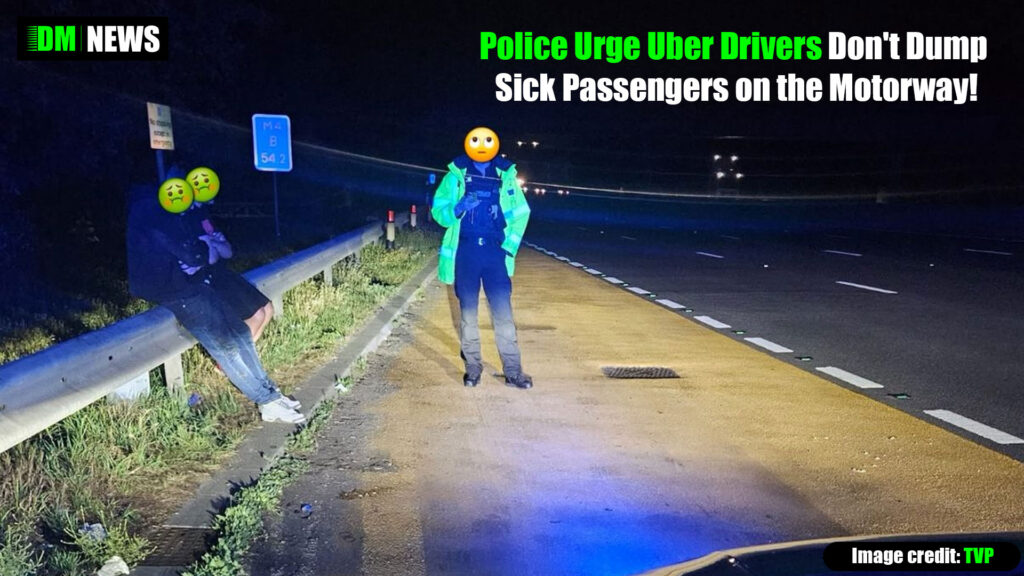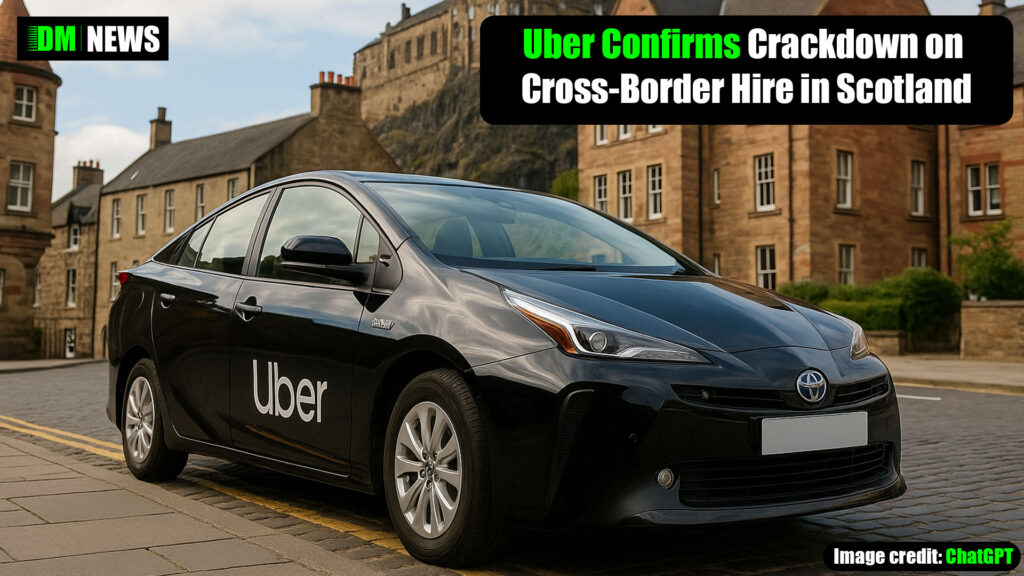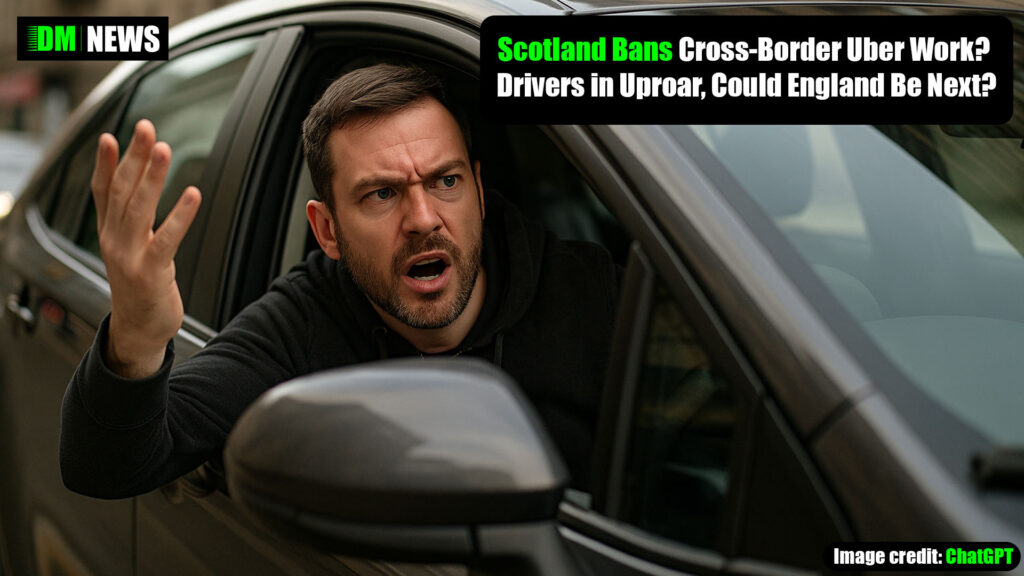A Liverpool-based Uber driver has raised concerns after receiving a warning from Uber for allegedly “deliberately increasing the trip time or distance,” despite following a passenger’s direct request to take a longer route. The warning, which the driver received via email, has left him worried about potential deactivation from the platform.

The incident occurred when the driver picked up a passenger south of Liverpool not too far from Liverpool John Lennons Airport for a journey initially priced at £12, based on an estimated six-mile route suggested by Uber’s navigation system. However, the passenger, running late for work, requested to take the motorway instead, stating that the standard Uber route would lead to delays in traffic.
“The passenger told me they do this drive every day and knew the best route to avoid congestion. They understood that the mileage would double to approximately 12 miles and that the fare would increase accordingly. They had no issue with this,” the driver explained.
Following the completion of the trip, during which the customer even tipped the driver £2 in appreciation, Uber sent a message stating that riders “prefer drivers to take the shortest or fastest route.” The warning further accused the driver of intentionally increasing the trip distance and cautioned against taking unnecessary detours.
What has frustrated the driver is that Uber did not contact him for clarification before issuing the warning. “They just sent the email without asking what happened. The customer asked for the route change, and I only did what they wanted,” he said.
The Dilemma: Listen to Uber or the Passenger?
The warning puts drivers in a difficult position. Should they strictly follow Uber’s navigation system, even if a passenger explicitly requests a different route? If a customer asks for a longer journey, accepting the potential price increase, is the driver still at risk of being penalised?
For many drivers, this situation creates uncertainty. While Uber’s policies state that the shortest or fastest route should be prioritised, they also encourage drivers to accommodate customer preferences. However, the lack of communication from Uber before issuing warnings suggests a system where drivers are penalised without proper investigation.
Uber has faced criticism in the past for its automated enforcement policies, which some drivers say unfairly punish them without considering real-world scenarios.
The driver in question now fears that if this happens again, he could be permanently deactivated from the platform. “I don’t know what to do next time. Do I ignore the passenger and take the Uber route, or do I listen to them and risk another warning?” he questioned.
For now, drivers remain stuck between satisfying customer requests and avoiding potential penalties from Uber, leaving them in an increasingly precarious position.






